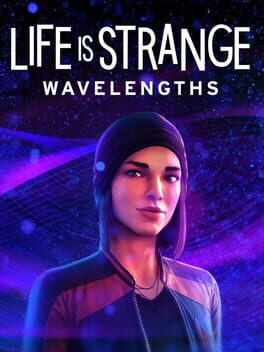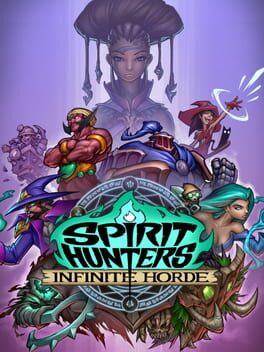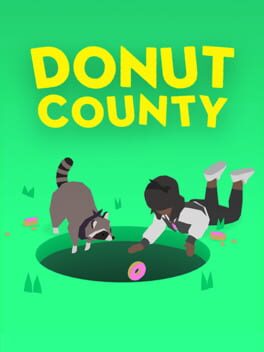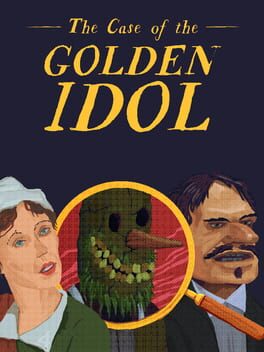bekarhops
BACKER
If you're wondering how deep your Life is Strange knowledge has to be in order to appreciate this, I'd say it'd work eminently well as a standalone. Even though Wavelengths builds on both True Colours and the previous LiS stories, as someone who's only played through TC, and about half of the first LiS, I didn't need any more context for it to become one of my favourite things I've played this year. I loved the way it folds the relative monotony and constraints of its setting and structure into the storytelling. Crucially, it's not one of those things where the developers tries to excuse their choices by mocking and lampshading them, it's more like they actively use their limitations to heighten the immersion, to put the player into the headspace of the character they're playing as.
Like I said, I'm really not familiar enough with the previous games to know exactly how Wavelengths would play to tried and true LiS-heads, but I will say that the parts of this that hit me the hardest emotionally, were the ones that seemed to draw the most on that mostly-unknown-to-me history. Which is a pretty impressive feat on Deck Nine's part.
Oh, and a quick practical note: this is a pretty meaty game for a piece of DLC, so be aware that you're heading into a 3+ hour session if you want to play through it in one sitting.
Like I said, I'm really not familiar enough with the previous games to know exactly how Wavelengths would play to tried and true LiS-heads, but I will say that the parts of this that hit me the hardest emotionally, were the ones that seemed to draw the most on that mostly-unknown-to-me history. Which is a pretty impressive feat on Deck Nine's part.
Oh, and a quick practical note: this is a pretty meaty game for a piece of DLC, so be aware that you're heading into a 3+ hour session if you want to play through it in one sitting.
Had a really great time with the progression up until the point where the game ramps up the amount of obstacles/ruins in the levels. Which is a deliberate design choice that works well in the normal run of play, but becomes a huge hassle in the boss fights at the end of each run. When these kick off, a circular fence pops up around you wherever you are at when the predetermined time limit runs out, creating an instant boss arena. The problem is that any physical obstacles within the circle don't despawn as this happens, which means your options for dodging and kiting can become extremely curtailed, depending on your position when that fence is raised around you. You could make the argument that making sure to be in an open space at the end of the run is a reasonable demand to make of the player, but given how hectic and chock full of enemies the screen tends to be at that point in the run, I don't think I can give the developers the benefit of the doubt on this one. Especially in the challenge levels that make Spirit Hunters stand out against other games in the auto-shooter survival genre (think Vampire Survivors), it feels deeply unfair to get to the end of a run, having managed to put together the required build, only to lose to the boss because there simply wasn't enough room to avoid the adds. This wouldn't be as much of a problem in a normal run, where your DPS is usually ridiculous enough by the end to kill the boss in seconds, but the challenge runs by design will limit your damage input to the point where boss fights become longer and more challenging. Losing these runs because half of the boss arena was filled with a giant monster rib feels super bad, and unintentionally so.
I'm not going to leave a thumbs down review, because I know how much that hurts discoverability on Steam – I honestly think the developers made a pretty kick-ass game – I just hope the team takes a second look at this aspect of the game, because I'd love to come back to it some day. Spirit Hunters does so many smart things to stand out in a very crowded field. It's just not enough to entice me to work around such a dubious design decision (or oversight, I really have no idea whether it's intentional or not, which makes it even more aggravating).
I'm not going to leave a thumbs down review, because I know how much that hurts discoverability on Steam – I honestly think the developers made a pretty kick-ass game – I just hope the team takes a second look at this aspect of the game, because I'd love to come back to it some day. Spirit Hunters does so many smart things to stand out in a very crowded field. It's just not enough to entice me to work around such a dubious design decision (or oversight, I really have no idea whether it's intentional or not, which makes it even more aggravating).
2018
I had such a blast in my time visiting the titular fictionalised version of Los Angeles, alternately harassing and helping its antropomorphised citizens, and just simply enjoying its art, writing and perfectly realised set of gameplay mechanics. Instead of stepping away from it going "that was perfect, I loved that", though, my feeling was more "that was it?". While ultimately, my unrealistic expectations are more of a me problem than a Donut County problem, I do feel like Ben Esposito and his co-developers' choice of genre inadvertently contributes to a short and contained length and scope feeling unsatisfying in its brevity. Both in terms of aesthetics and mechanical execution, the developers execute on a level that in my eyes puts DC up on a level with the best puzzle action games from Nintendo or Keita Takahashi, or more modern indie entrants like Overcooked (severely underappreciated as a single-player experience) and Moving Out.
Again, I think Esposito and company succeeded in everything they set out to do with Donut County. I just think that success subconsciously made me bracket the game in with those similar experiences, which created expectations in me the devs weren't even interested in meeting. Definitely a high four-star game, but somehow a three star experience. Brains are weird.
Again, I think Esposito and company succeeded in everything they set out to do with Donut County. I just think that success subconsciously made me bracket the game in with those similar experiences, which created expectations in me the devs weren't even interested in meeting. Definitely a high four-star game, but somehow a three star experience. Brains are weird.
Thoroughly delightful detect-em-up. Going back after the end to look at the first cases, I was surprised to see how relatively simple they were, compared to the last handful. The thing is, I definitely didn't find them simple at the time. The difficulty curve turned out to have been expertly tuned by Color Gray (the developers). The challenge kept pace with me as I got more familiar with the way of thinking the game demanded to solve the mysteries – without ever becoming neither overwhelming nor boring, nor causing any spikes in difficulty.
Kudos to the devs as well for including various options for legibility and adaptation. I used the "no pixel hunting" clue-highlighting option myself, which worked seamlessly both visually and mechanically. I did not try the hint functionality, so I can't speak to how that works, but it was reassuring to see it to have such a prominent place in the UI.
Given the lineage The Case of the Golden Idol evokes, both with its art direction and gameplay, I admit I expected a much more opaque experience overall. So I was overall pleasantly surprised to find that Color Gray had decided to make playing the game as friction free as possible, while still retaining a nice level challenge (for me, anyway). Instead, the game builds a sense of the unknown and impenetrable by being parsimonious with the details about its world and characters, doling them out sparingly over the course of the entire story, allowing the unfamiliar and uncertain to lend an extra layer of doubt to my deductions. To me, that trade-off was perfect, though you might feel differently if you're sharper than I am, and/or in need of more resistance to feel satisfied by a puzzler.
Kudos to the devs as well for including various options for legibility and adaptation. I used the "no pixel hunting" clue-highlighting option myself, which worked seamlessly both visually and mechanically. I did not try the hint functionality, so I can't speak to how that works, but it was reassuring to see it to have such a prominent place in the UI.
Given the lineage The Case of the Golden Idol evokes, both with its art direction and gameplay, I admit I expected a much more opaque experience overall. So I was overall pleasantly surprised to find that Color Gray had decided to make playing the game as friction free as possible, while still retaining a nice level challenge (for me, anyway). Instead, the game builds a sense of the unknown and impenetrable by being parsimonious with the details about its world and characters, doling them out sparingly over the course of the entire story, allowing the unfamiliar and uncertain to lend an extra layer of doubt to my deductions. To me, that trade-off was perfect, though you might feel differently if you're sharper than I am, and/or in need of more resistance to feel satisfied by a puzzler.



